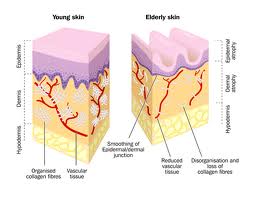Your Body’s Own Anti Aging Department Of Defense
The generation of free radicals is never going to stop. And approximately 3 percent of oxygen used in the metabolic processes of our cells is converted to free radicals. So why bother to worry about skin aging? If we can’t stop free radical production, how can we slow down skin aging and inflammation?
The good news is that human skin has a wonderfully organized Department of Defense. It is equipped with two major systems that are capable of providing top-notch protection against free-radical damage:
1. Catalase, superoxide dismutase, and glutathione peroxidase – enzymes that race to neutralize free radicals.
2. Non-enzymatic antioxidant defense which directly uses vitamins and other nutrients – items like vitamins C and E, zinc, glutathione, and the so-called phytochemicals from plant-based foods and herbs.
One major caveat is that this wonderful antioxidant defense system depends entirely upon diet. Dietary nutrients turn on the ignition and ultimately drive the antioxidant enzymes, and the second line of defense, the non-enzymatic antioxidant armor, is obviously obtained directly through our foods and beverages of choice. Inflammation also can be dialed up or turned down by what we eat and drink.
The other major caveat is that the antioxidant defense system loses its efficiency through the aging process, and there is also an increased propensity to produce inflammatory chemicals in the skin as we age. That doesn’t mean that the young are immune; however, it does mean that inappropriate dietary choices made by older adults, those who pull up often to the drive-through window of major fast-food chains, will have massive skin-compromising consequences.
Melanoma Epidemic
Melanoma rates are increasing at an astonishing rate worldwide, with a 24 percent increase in Israel in 2006 alone. In Japan the rates have been steadily climbing since the 1990s. In the United Kingdom the rates have doubled in the last six years, Ireland has seen an 84 percent increase in malignant melanoma among males over the last decade. Even India, which has had relatively low levels of melanoma, is observing an increase. The United States has also had a marked increase over the last twenty years, particularly in the young.
As much as the media and some dermatologists like to point to tanning beds, it is a far stretch to place the sole blame on these machines, Research certainly indicates they can contribute to the skin aging process – decreasing skin firmness and elasticity. We strongly urge against the use of these machines. However, population studies and the largest review to date in the journal Photodermatology, Photoimmunology & Photomedicine (2007) have not made convincing associations between sun-bed use and melanoma risk.